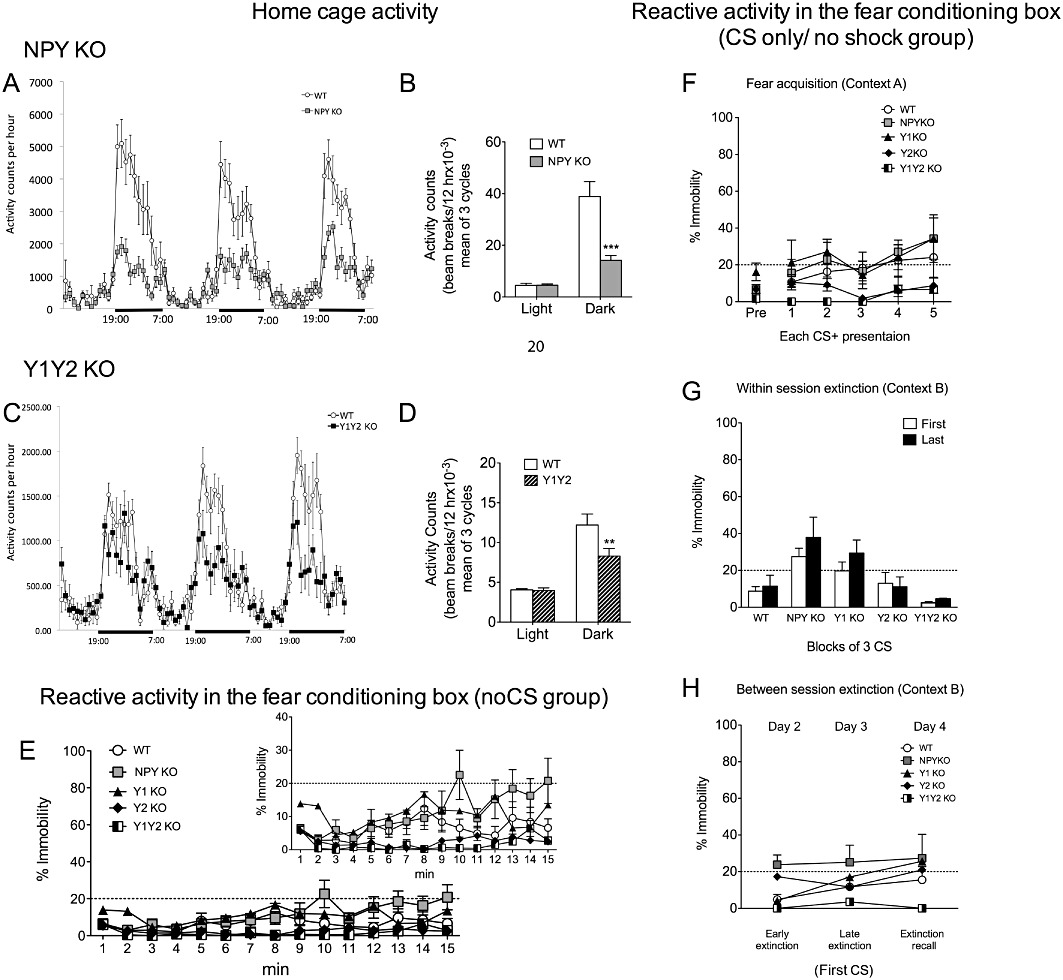Figure 1.

Home cage activity, reactive activity in the fear-conditioning box and CS only/no shock data of NPY KO, Y1 receptor KO, Y2 receptor KO and Y1/Y2 receptor double KO mice. (A) Home cage activity measurement in NPY KO mice and WT controls during three consecutive light/dark cycles; (B) quantification of cumulative activity demonstrates significantly decreased activity of NPY KO mice during the dark phase, but equal activity in the light phase of the light/dark cycle; (C) home cage activity determined during three consecutive light/dark cycles and (D) quantitative evaluation of cumulative activity demonstrating decreased activity of Y1/Y2 receptor double KO mice in the dark phase, but not in the light phase of the light/dark cycle; (E) baseline immobility during 15 min (comparable with the respective experimental time scales used in fear acquisition and extinction experiments) in context A of the fear-conditioning box without any stimulus (insert with altered scale more accurately displays differences of individual groups); (F) reactive motor activity of CSonly/no shock groups of the different genotypes during acquisition (G) within-session extinction period of CS only/no shock group (shown by comparison of the first three with the last three CS); and (H) between-session analysis of CS only/no shock group (shown by comparison of % immobility to the first CS on three individual extinction days). Dashed line in E–H indicates freezing threshold. Data shown are means ± SEM, repeated two-way anova with Bonferroni post hoc test (home cage n= 8 per group, reactive motor activities n= 5 per group), **P < 0.01, ***P < 0.001.
